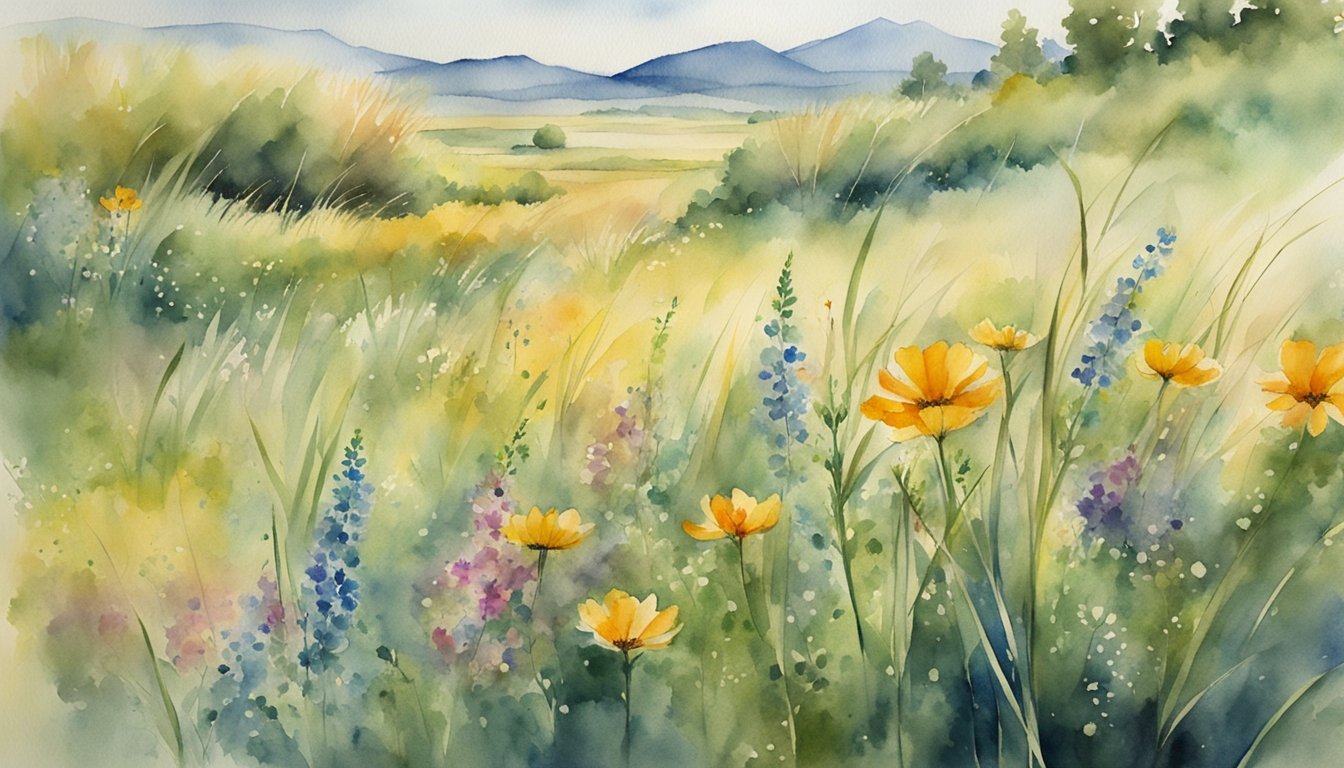Grassland Basics
Characteristics of Grasslands
Grasslands are ecosystems where grasses dominate and trees are infrequent, creating open, continuous areas covered by grass. These regions have a specific climate, with precipitation varying from season to season and year to year, ranging from 25.4 to 101.6 centimeters (10 to 40 inches) annually. The temperature in grasslands can vary widely, from below freezing in temperate grasslands to above 32.2 degrees Celsius (90 degrees Fahrenheit) in tropical grasslands.
The soil in grasslands is generally fertile and nutrient-rich, but the relatively low rainfall makes the land more suitable for grasses than for larger plants like trees. Grasslands are known to store about one-third of Earth’s terrestrial carbon and act as important carbon sinks.
Types of Grasslands
There are two main types of grasslands:
- Temperate grasslands: Examples include the prairies in North America, Pampas in South America, steppes in Eurasia, and veld in Africa. These grasslands experience colder winters, moderate summers, and relatively low rainfall.
- Tropical grasslands: These grasslands are also called savannas and are found in sub-Saharan Africa, northern Australia, and parts of South America. Tropical grasslands have warmer temperatures and higher rainfall than their temperate counterparts but still experience significant seasonal variations in precipitation.
Geographical Distribution
Grasslands account for approximately 30 to 40% of the Earth’s land area and are found on every continent except Antarctica. They play a crucial role as habitats for many different animal species like African elephants and prairie dogs.
In North America, grasslands are mostly found in the Great Plains region, while South America has extensive grasslands known as the Pampas. The African continent is home to the vast savannas of Sub-Saharan Africa, and Eurasia contains the steppes that stretch from Eastern Europe to Central Asia. Lastly, the tropical grasslands of Northern Australia are known for their distinct climate and unique wildlife.
These diverse grassland ecosystems play essential ecological roles, providing numerous ecosystem services and acting as critical habitats for many plant and animal species.
Ecology and Biodiversity

Flora and Fauna
Grasslands are a major biome, accounting for up to 40% of Earth’s terrestrial area. They support a diverse ecosystem with vegetation ranging from grasses and wildflowers to scattered shrubs and trees. These habitats are home to a wide variety of animal species, many adapted to grazing on the abundant plant life, such as bison, zebras, wildebeest, gazelles, and prairie dogs.
There is a great variety of plant life within grassland ecosystems, including different types of grasses, flowers, and other vegetation. Some common types of grasses in these habitats are blue grama, buffalo grass, and needlegrass. Wildflowers, such as lupine, aster, and goldenrod, add color and diversity to the landscape while providing valuable resources for pollinators like bees and butterflies. Trees and shrubs may be less common in grasslands, but they can be found scattered throughout, often in savanna ecosystems. Examples of these trees include acacia, baobab, and eucalyptus species.
Birds also play a significant role in grassland ecosystems. Many species have adapted to living in open habitats, often with specialized diets, like insectivores and seed-eating birds. These birds help with pest control and seed dispersal, contributing to the overall health and functionality of the ecosystem.
Environmental Challenges and Conservation
Despite their rich biodiversity, grasslands face numerous threats from human activities and climate change. Some natural grasslands have been converted to farmland or other uses due to their fertile soil, while others are threatened by overgrazing, leading to a decline in plant diversity and increased soil erosion. Fires are also a natural part of the grassland ecosystem, but human-induced fires or the suppression of natural fires can affect the composition and growth patterns of the vegetation.
One common challenge for grassland ecosystems is overgrazing by domestic livestock and wild grazers. Species such as bison, wildebeest, and zebras can heavily graze and trample vegetation, leading to changes in plant communities and potentially impacting soil health. Reducing overgrazing and promoting sustainable grazing practices can help protect grasslands and maintain healthy ecosystems.
Loss of biodiversity is also a significant concern for grassland ecosystems. Due to a range of factors, such as habitat loss, fragmentation, illegal hunting, and changing climatic conditions, grasslands have seen a decline in plant and animal species richness. Conservation efforts within grasslands include the creation of protected areas, habitat restoration, and species reintroduction programs.
Overall, grasslands provide crucial habitats for numerous plants and animals while supporting important ecosystem services. Conservation and sustainable management of these ecosystems are critical to preserving their ecological functions and the biodiversity they support.

